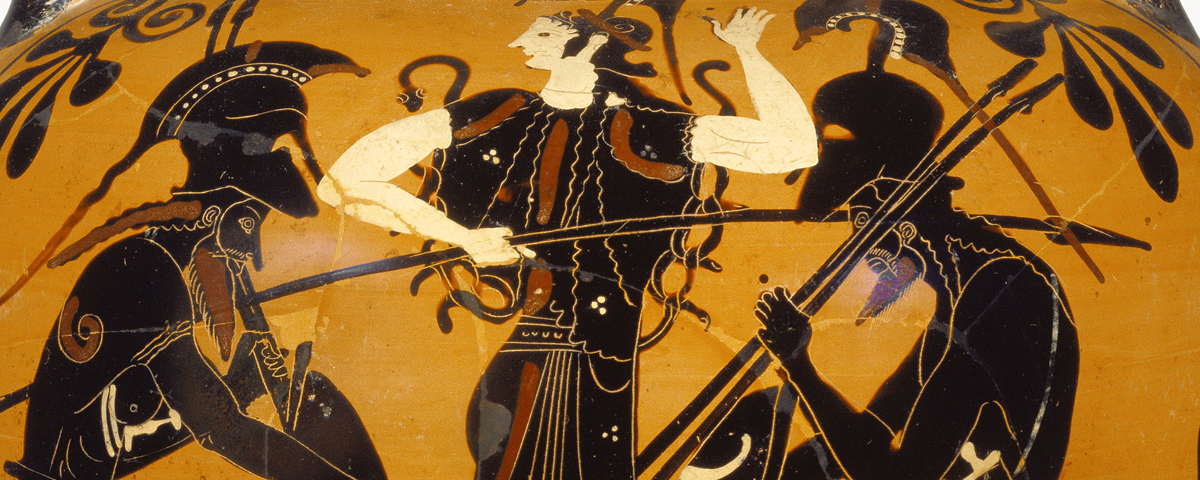THE EPIC CYCLE, AN AGE-OLD SERIES of eight poems, narrates the deeds of gods and men during the era of the legendary Trojan War. For generations, the poems in the cycle were transmitted through song. Then in the eighth century BC, two of them, The Iliad and The Odyssey, both attributed to Homer, were recorded in writing; the other six, surviving only in fragments, were probably recorded a century later. By the sixth century BC, the Epic Cycle had captivated the public imagination, and images from it adorned pottery and other everyday items.
Peisistratos, ruler of Athens from 561 to 527 BC and a supporter of the arts, is most often credited with facilitating the widespread appreciation of the Homeric epics, previously enjoyed mainly by the literate elite. During the 566 BC Panathenaic Games honoring the gods, he instituted a contest that involved reciting Homeric passages. Subsequent rulers continued the recitation contests because Homeric verse served both as entertainment and moral education.
The renaissance in public fascination with the centuries-old war led to the rise of hero cults, focused on the purported burial sites of figures like Achilles, Agamemnon, and Menelaus, who were also depicted in pottery from the period—clearly, the profusion of images of Achilles indicates that he was a favorite cult figure. The threat of a looming war with Persia provided another incentive for Greek potters to invoke Homeric iconography. Trojans dressed in Persian-style clothing found their way onto drinking vessels, and images like that of Thetis rearming her son Achilles may well have resonated with mothers preparing their own sons for battle.


.jpg)



